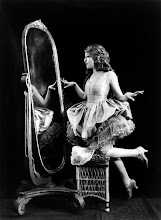Biblical epics have long been a part of film culture, from the classic Charlton Heston The Ten Commandments to the controversial and oft protested The Last Temptation of Christ. Modern biblical epics have even been made, such as Mel Gibson's Passion of the Christ and religious doctrine has been even turned into musicals, i.e. Joseph and the Amazing Techincolor Dreamcoat and Jesus Christ Superstar. Still, biblical topics in film and on stage are not new. Today I was like to cover the film King of Kings, my only problem was choosing which one.
You see, there are two versions of King of Kings, the more popular biblical epic from the 1960s by Nicholas Ray and the 1927 version by legendary director Cecil B. DeMille. Both films are spectacularly done, considering the techonology available for the time. Then again, doing a biblical epic doesn't require a lot of fancy machinery and special effects. Still, both films cover the same topic: the birth, final days, and ressurection of Jesus Christ. Using the material available, I am going to try and compare these two films.
We'll go with oldest first, starting with the DeMille 1927 version of the film. Properly titled The King of Kings, this film would get points if we had a longest title category. Even though it is a silent film, DeMille took full advantage of what effects that were available at the time. The entire resurrection scenes were done using technicolor for extra awe. However, this film does have a lot of Anti-Seminitism and further encourages the falsehood that Mary Magdalene was a prostitute. Filmfanatic.org discusses the redeeming qualities of the film and does a brief review. The site decentfilms.com explores both the good and bad of this film in this review. DeMille claimed that The King of Kings was his favorite of all the films he had made. Before the invention of video, The King of Kings held the record for most screened picture on earth, had been seen by over a billion people, and was shown somewhere on earth every day. The Cecil B. DeMille site also offers a brief bio and synopsis of the film, which can be read here. The story has very human elements to it, though it isn't for everyone. A great history and synopsis of the film can be read here, thanks to cinemaweb.com. For some good trivia about the film, check out this part of the IMDB site.
Now we will be moving on to the 1961 Nicholas Ray movie. The second film takes a lot from the old one but is much more political. Barabbas plays a major role in this film, though he doesn't typically in biblical films about Christ. This was one of the first major films to show the actual face of the actor portraying Christ. The narration was written by science fiction author Ray Bradbury which was read by Orson Welles. Filmfanatic.org does another review for this film, which can be read here. The Ferdyonfilms blog does another great review about the entire film. This film version is particularly popular among Christians, as exhibited by this entry on the Bible Film Blog, which discusses the Christian elements of the film.
Of course, in the end, I have to leave it up to you. If you can't find the films, watch these clips I have provided and make up your own mind. First, here is the trailer for the 1927 version by DeMille:
And secondly, here is the trailer for the 1961 biblical epic version of the film.
And as a very special Christmas treat, here is a colorized scene from the DeMille film:






No comments:
Post a Comment